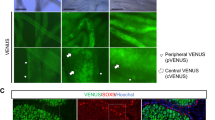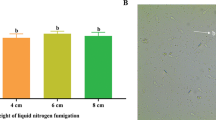Abstract
THE tails of spermatozoa were generally thought to be radially symmetrical; although Randall and Friedlaender1 have shown that the tails of ram spermatozoa are elliptical and slightly flattened, this may have been due to the drastic treatment necessary for inspection by electron microscopy. Challice2, however, has produced more convincing evidence in the case of the mouse. He cut transverse sections of the spermatozoa tails, which, examined with an electron microscope, showed them to consist of a core of fibrils flanked by two ridges each composed of a single lateral fibril.
This is a preview of subscription content, access via your institution
Access options
Subscribe to this journal
Receive 51 print issues and online access
$199.00 per year
only $3.90 per issue
Buy this article
- Purchase on SpringerLink
- Instant access to full article PDF
Prices may be subject to local taxes which are calculated during checkout
Similar content being viewed by others
References
Randall, J. T., and Friedlaender, M. H. G., Exp. Cell. Res., 1, 1 (1950).
Challice, C. E., Proc. Soc. Study Fert., 4, 21 (1952).
Hancock, J. L., Nature, 167, 323 (1951).
Author information
Authors and Affiliations
Rights and permissions
About this article
Cite this article
DOTT, H. Dark-Ground Illumination of Ram Spermatozoa. Nature 172, 626 (1953). https://doi.org/10.1038/172626a0
Issue date:
DOI: https://doi.org/10.1038/172626a0



